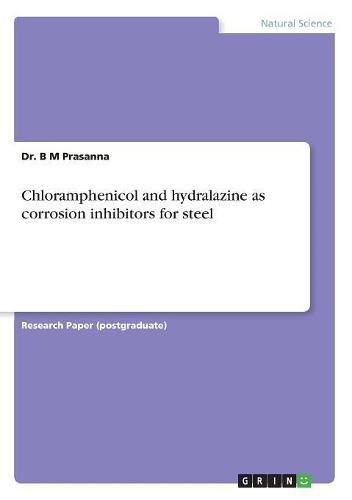Readings Newsletter
Become a Readings Member to make your shopping experience even easier.
Sign in or sign up for free!
You’re not far away from qualifying for FREE standard shipping within Australia
You’ve qualified for FREE standard shipping within Australia
The cart is loading…






Research Paper (postgraduate) from the year 2016 in the subject Chemistry - Materials Chemistry, grade: 10, language: English, abstract: The corrosion inhibition mechanism of Chlorophenicol and Hydralazine for the mild steel in 1M HCl was studied by chemical, electrochemical and adsorption measurement at 303-333 K temperature regions. The inhibition efficiency of the Chlorophenical and Hydralazine increases with increasing inhibitor but decreases with increase of temperature. The mechanism of the inhibition action attributed due to the adsorption of inhibitor on the surface of the metal, for which this adsorption process obeys Langmuir adsorption isotherm. The electrochemical Tafel analysis shows that the inhibitor acts as a mixed type, and gets adsorbed by either physically or chemically. Surface study was done by scanning electron microscopic method due to the formation of protective film on the metal surface.
$9.00 standard shipping within Australia
FREE standard shipping within Australia for orders over $100.00
Express & International shipping calculated at checkout
Research Paper (postgraduate) from the year 2016 in the subject Chemistry - Materials Chemistry, grade: 10, language: English, abstract: The corrosion inhibition mechanism of Chlorophenicol and Hydralazine for the mild steel in 1M HCl was studied by chemical, electrochemical and adsorption measurement at 303-333 K temperature regions. The inhibition efficiency of the Chlorophenical and Hydralazine increases with increasing inhibitor but decreases with increase of temperature. The mechanism of the inhibition action attributed due to the adsorption of inhibitor on the surface of the metal, for which this adsorption process obeys Langmuir adsorption isotherm. The electrochemical Tafel analysis shows that the inhibitor acts as a mixed type, and gets adsorbed by either physically or chemically. Surface study was done by scanning electron microscopic method due to the formation of protective film on the metal surface.